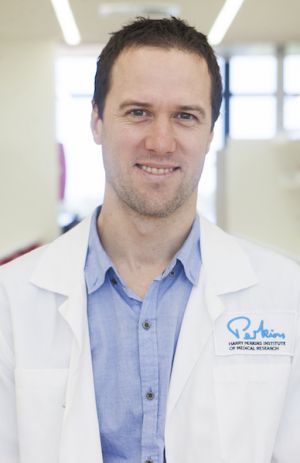
Australian researchers have unearthed new evidence in a decade-long mystery concerning stem cell reprogramming, a process believed to hold immense potential for regenerative medicine.
In a study, published in Cell Stem Cell, researchers from the University of Western Australia, the Harry Perkins Institute of Medical Research, and Monash University describe key drivers of the process by which cells from mature tissues of the body, such as skin, can be deliberately converted into stem cells that can subsequently form almost any cell type.
Stem cell reprogramming could theoretically give scientists the capacity to create any type of tissue for transplantation or for the repair of damaged organs. However, the ability to carry out cell reprogramming depends on the use of proteins called transcription factors, which help switch specific genes “on” or “off”.
The research, co-led by UWA’s and the Harry Perkins Institute’s Professor Ryan Lister and Monash’s Biomedicine Discovery Institute and Australian Regenerative Medicine Institute’s Associate Professor Jose Polo, provides an explanation of how these transcription factors work to reprogram cells.
The capability of a specific set of four transcription factors to turn mature cells into induced pluripotent stem cells (iPSCs) was first discovered in 2006 by Japanese researchers, who were subsequently awarded a Nobel Prize for the breakthrough.
“More than a decade after this discovery was made, it was still not understood clearly how these reprogramming factors work” said Professor Lister.
The current study describes how these transcription factors go into areas of the genome and make specific genes that are encoded in the DNA accessible.
“Genes and other instructions encoded in the DNA sequence are required to build a functional cell. But DNA can be switched between an open accessible state and a closed compressed state, which alters how the cell can utilize the underlying DNA sequence” said Professor Lister.
“This is referred to as chromatin, a complex of DNA and proteins that forms chromosomes within the cell nucleus, and that influences how information stored in the DNA sequence is used by the cell”.
The researchers used advanced genome analysis techniques to watch how the chromatin was reconfigured throughout the cell reprogramming process, from specialised cells into iPSCs.
“Through this, we were able to see in great detail how some cells reprogram successfully, while others don’t, and learn how to improve the efficiency of the conversion process”.
Co-lead author Associate Professor Polo explained that “in a very simplified version, we found that the reprogramming factors open other areas on the chromatin, while the transcription factors that control the skin get ‘lost’ in these areas, forget to control their own genes and get shut down”.
“In this way, the reprogramming factors can open the areas involved in the pluripotency program.
“Now that we know they’re significant, we can study these areas in more detail and see what role they may play in development, regeneration or even cancer.”
The research was made possible through the work of Research Fellows and co-first authors Dr Anja Knaupp from Monash University and Dr Sam Buckberry from the University of Western Australia and the Harry Perkins Institute.
“Through our molecular analyses we were able to better understand and consequently improve the reprogramming process, which is essential if we want to eventually move this technology into clinical applications,” said Dr Knaupp.
“Our approach in isolating cells at different stages of the reprogramming process allowed us to gain an unprecedented view of how the DNA undergoes two major waves of change with respect to how it is compacted in a cell’s nucleus. This was a critical step in helping identify what mechanisms enable a cell to successfully reprogram”, said Dr Buckberry.
Such findings may pave the way in the future for tissues to be regenerated within the human body rather than in the laboratory, for the production of ‘synthetic cells’ with properties tailored to the needs of researchers or clinicians, or for the production of drugs that mimic these factors.
The study was supported by the Australian National Health and Medical Research Council and the Australian Research Council Stem Cell Australia Special Initiative in Stem Cell Science.
